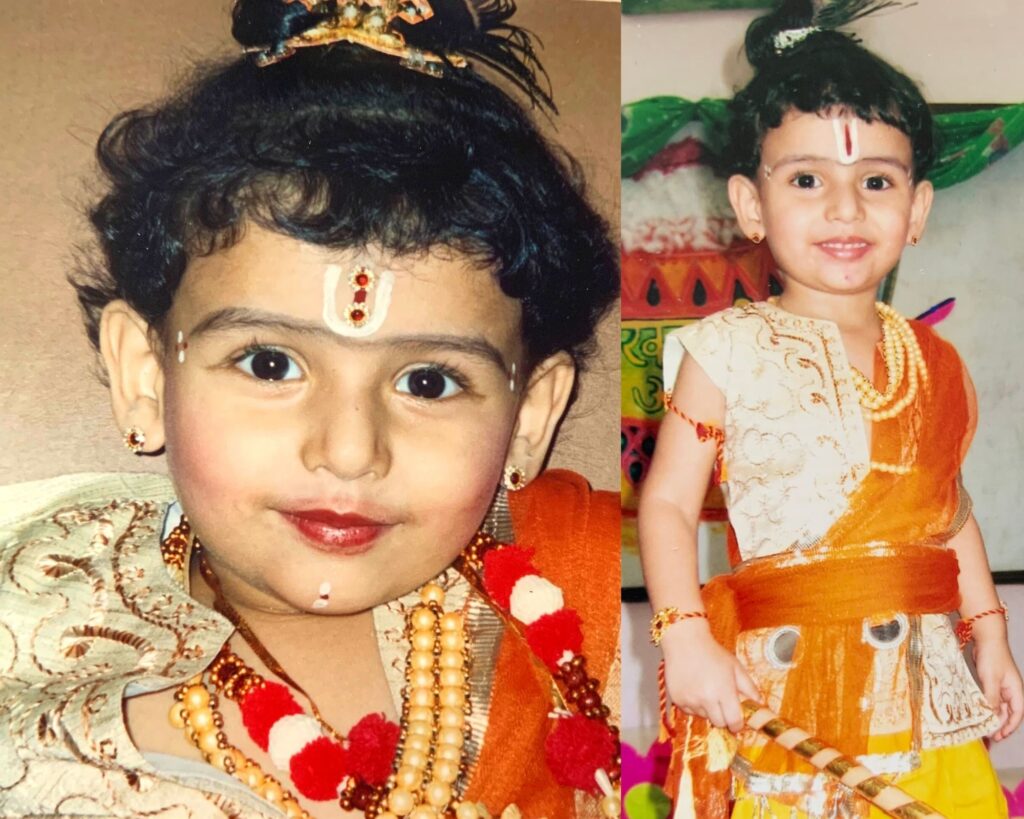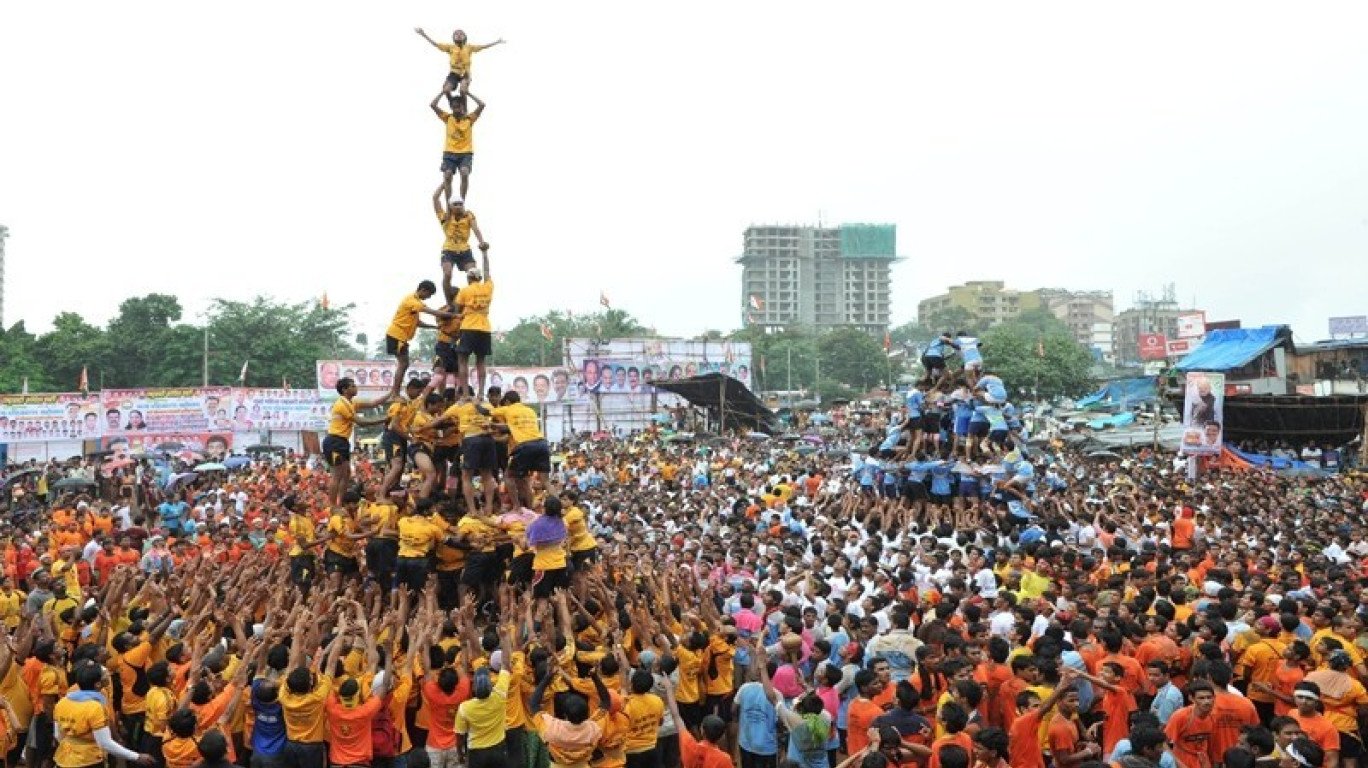While driving past the Lalbaug market of Mumbai yesterday, I was delighted to spot the seasonal sweet palm fruit or Tal. I made an instant halt and most enthusiastically walked up to the vendor but alas! It wasn’t the ripe ones sold back home in Kolkata. Tomorrow is Janmashtami and my cravings for taler bora have reached the topmost height on the onset of this popular Indian festival, celebrating the birth of Lord Krishna.
Indian Festivities are established on the basis of religious mythology and food. There is unity and diversity all over the country when it comes to traditions and culture. I grew up in Bengal where the taler bora is an essential part of the Prasad along with many other food offerings in the honor of Lord Krishna.
The slightly bitter, sweet, aromatic fritters are a seasonal delight of the eastern part of the country. It is quite time-consuming to make them. One needs to have a strong sense of smell and experience to pick the perfect ripened fruit for the taler bora. Once the fruit is perfect, fifty percent of the work is already done. The next steps involve some good arm-power while pulping the fruit to the last drop. Then it’s a test of patience as the pulp needs to be hung in a muslin cloth for a good few hours before it is ready to be mixed with scraped coconuts, sugar and flour. Then small teaspoon size dumplings of the batter are fried and soaked in mild sugar syrup, ready for the offering. On the day following the Janmashtami, it was time to indulge and relish the sweet, wholesome fritters, lasting for the following few days!
Then small teaspoon size dumplings of the batter are fried and soaked in mild sugar syrup, ready for the offering. On the day following the Janmashtami, it was time to indulge and relish the sweet, wholesome fritters, lasting for the following few days!
According to Hindu mythology, the people of Dwarka offered rich delicacies on a daily basis to Lord Indra in order to be in the good books of the God of thunder and rain. Lord Krishna was born as the eighth avatar of Lord Vishnu and lived in Dwarka. He decided to put a stop to the age-old compulsion. Lord Indra was highly offended at the intervention and brought in intense rain and flood in the region for seven days. Lord Krishna saved the people of Dwarka, by lifting Govardhan Parvat on one finger, sheltering them under the mountain from the deluge for seven days without food and water, till Lord Indra conceded defeat and the rains stopped.
Lord Krishna ate eight kinds of food every day. The people of Dwarka showered Lord Krishna with their love and gratitude by offering him fifty-six kinds of his favorite food at the end of seven days. During the few years that I spent near Banaras and Rajasthan, I got the chance to experience Janmashtami far more closely. Living in an industrial township involved full participation in most cultural events. The famous Chhappan Bhog was prepared by the women of the township within the temple complex. Everyone, who willingly wanted to volunteer could participate in the preparation of the Mahaprasad.
Every year I used to be in complete awe at the sheer dedication and joy that went into the preparation of the fifty-six vegetarian dishes in sufficient amount to be distributed amongst hundred-odd families the following morning within the gated complex. One can see this grand offering of Chhappan Bhog in the ISKON and Puri’s Jagannatha temple on the occasion of Janmashtami.
 My very own Makkhan Chor☺️
My very own Makkhan Chor☺️
Lord Krishna is attributed with the name of Makkhan Chor for his childhood affinity towards homemade butter. Therefore, makkhan misri (unsalted butter along with palm sugar) is an important part of offering in Janmashtami. He is also revered as Laddoo Gopal and therefore laddoo is an integral part of the prasad. Rice flakes or Poha is also offered as prasad as it is associated with Lord Krishna’s childhood friend Sudama. It is believed that Sudama got rid of his state of poverty after Lord Krishna ate a handful of homemade Poha brought as a gift by him. Panjiri is another essential offering, popular in the Northern belt of India. It is made of roasted coriander powder mixed with desi ghee and dry fruits. Apart from that Shrikhand, Kheer, Malpua, Rabri are all part of Lord Krishna’s favorite food.
In the Western part of India, the following day of Janmashtami is celebrated as Dahi Handi.
.
 Famous Dahi Handi of Maharashtra
Famous Dahi Handi of Maharashtra
Several youth clubs participate in the high-spirited competition to break a pot of curd, which is hung at a considerable height by forming human pyramids. This celebration is a reconstruction of the childhood stories of Lord Krishna’s mischievous makkhan chori.
Since last year, every festivities in India have been trimmed down due to the grave presence of the COVID Pandemic. Lord Krishna is known to be the slayer of unrighteousness and evil and we hope that the onslaught of the Pandemic comes to an end with this Janmashtami and we can once again celebrate the famous Dahi Handi with full gusto and excitement to the chants of GOVINDA ALA RE…Happy Janmashtami to all.☺️